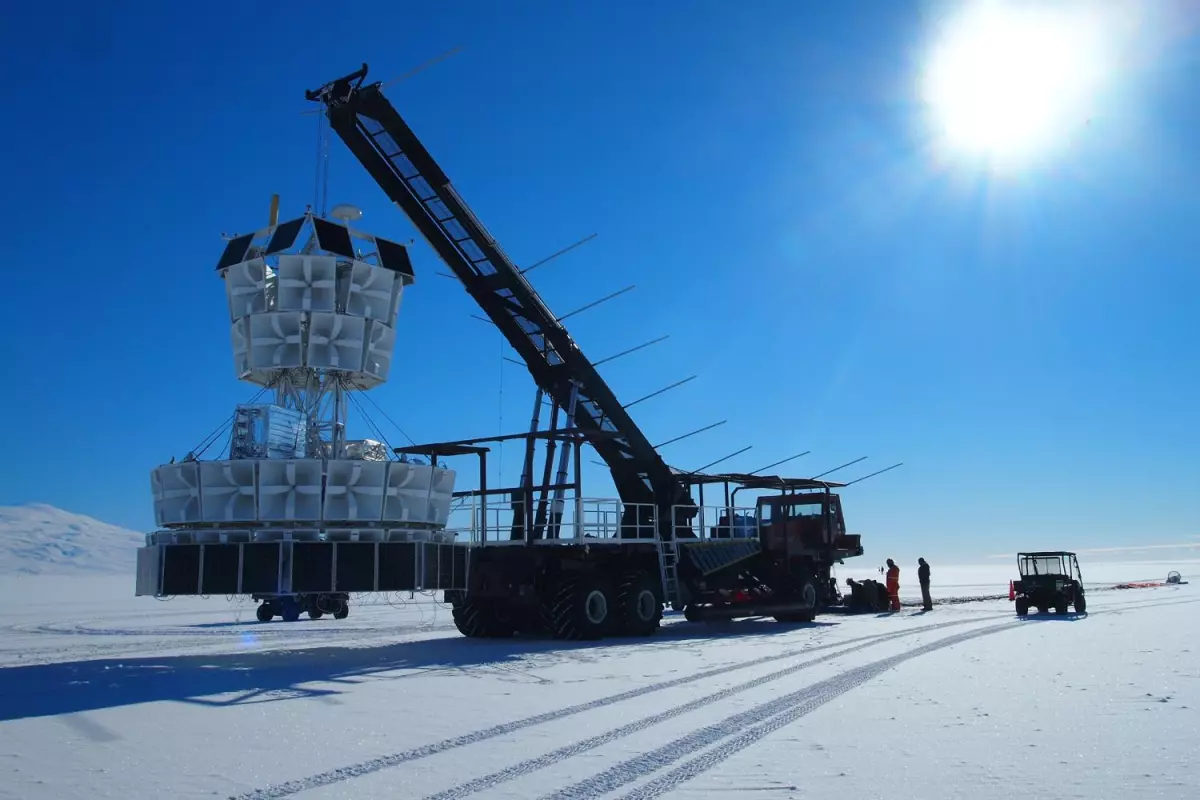It may sound like a plot twist out of a science fiction novel, but researchers have detected mysterious radio signals coming from beneath the Antarctic ice that appear to be inconsistent with the standard models of particle physics.
These exotic radio signals were first captured between 2016 and 2018 by NASA’s Antarctic Impulsive Transient Antenna (ANITA) instrument, and since then, researchers have been hypothesizing plausible explanations. Now, a new study published in Physical Review Letters offers a fresh perspective on this persisting enigma.
ANITA is a suite of 24 radio antennas attached to a NASA balloon that floats 40 km (25 miles) above Antarctica. Its purpose is to analyze cosmic events by capturing radio waves that enter the atmosphere. Antarctica was chosen for its low levels of interference from other radio signals.
Most of the radio waves picked up by ANITA usually come from above. But the anomalous signals detected in 2016 and 2018 were different, coming from below the surface of the ice. This suggested that the signals had travelled through thousands of kilometers of bedrock before reaching ANITA. The rock should have absorbed the signals, yet they persisted.
“It’s an interesting problem because we still don't actually have an explanation for what those anomalies are, but what we do know is that they're most likely not representing neutrinos,” said Stephanie Wissel, associate professor of physics, of the ANITA team.
Since ANITA is specifically designed to capture neutrinos, and since neutrinos can pass through vast amounts of matter without interacting, they emerged as leading candidates. Neutrinos are virtually massless subatomic particles with no charge. They are abundant in the universe and emitted from high-energy sources like the sun or by major cosmic events like supernovas.
Though notoriously difficult to detect, even one particle can reveal impressive insights into cosmic events that occurred millions of light-years away. ANITA is one of the few neutrino detectors designed to capture so-called ice showers, a phenomenon that occurs when radio waves are released from the interaction between neutrinos and ice.
When a type of neutrino, called tau neutrinos, collide with the dense Antarctic ice they release a secondary particle called a tau lepton. This causes charged particles to release a different kind of radio wave burst, which ANITA’s antennas are also designed to detect. These are called air showers. Wissel describes these air showers as a bit like looking at “sparklers waved in one direction, with sparks trailing them.”
Tracing back these signals, and distinguishing the differences between air and ice showers, can reveal the origin of the particles. However, researchers could not trace those “anomalous signals” back to any known source, nor did they resemble typical neutrino interactions. The team analyzed the data and compared it with mathematical models and other simulations to rule out the possibility of other explanations.
Scientists then cross-referenced these signals from other detectors like the IceCube and the Pierre Auger Observatory to check if they too recorded similar radio waves. Confusingly, other detectors did not register anything that resembled what ANITA had picked up.
So for now, researchers have ruled out what was previously suspected to be the most likely explanation, that those radio waves were caused by neutrinos. The phenomenon has again been described as “anomalous,” prompting researchers to look to future instruments for answers. They are now eyeing the launch of the next powerful detector, Payload for Ultrahigh Energy Observations (PUEO), to shed light on the enigma.
The study has been published in Physical Review Letters.
Source: PennState





